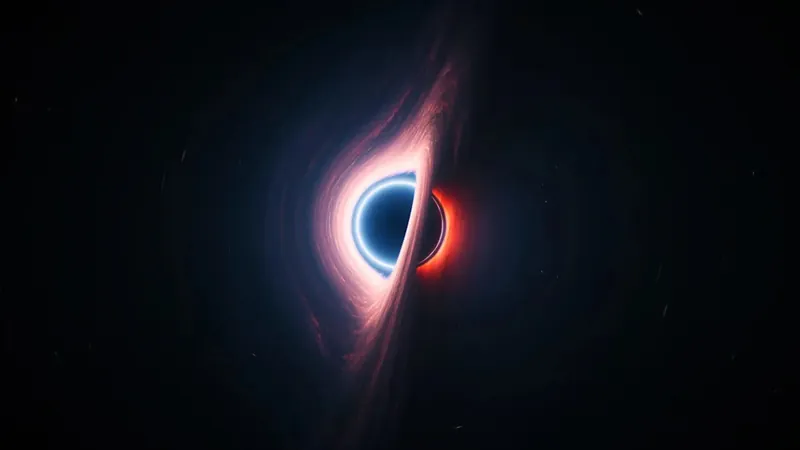
Mysterious Black Hole Discovered Without a Galaxy: What Does It Mean?
2025-09-17
Author: Sophie
A Black Hole Unlike Any Other
Imagine a supermassive black hole roaming the universe, but with no galaxy to call home. Meet QSO1, a cosmic enigma that baffles astronomers as it shines bright in the depths of space—a rogue black hole with no visible galactic companions.
The Birth of a Cosmic Mystery
Typically, black holes form when massive stars exhaust their nuclear fuel and collapse under their own gravity, often leaving behind stunning supernova displays. But QSO1 presents a conundrum—despite sharing characteristics with other supermassive black holes, it appears to have never originated from a galaxy. Its unusual size, estimated at 50 million solar masses, raises questions about its origins.
What Could Have Happened to QSO1's Galaxy?
Most supermassive black holes exist at the center of galaxies, surrounded by swirling matter and brilliant stars. However, QSO1’s case is different. This black hole might be a primordial black hole that grew rapidly in the early universe or a direct-collapse black hole that formed from a massive gas clump collapsing in on itself. The mystery deepens because cosmological theories suggest that black holes emerged only after galaxies formed, leading to questions about whether QSO1 ever had a galaxy to begin with.
Exploring the Secrets of QSO1
Astrophysicist Roberto Maiolino from Cambridge University is on a mission to unravel this mystery. His research team is investigating similar cosmic objects known as "little red dots" (LRDs) detected by the James Webb Space Telescope (JWST). These LRDs are elusive, displaying strange spectral properties and low X-ray emissions, making them difficult to categorize.
Identifying a Cosmic Anomaly
QSO1 was notably easier to identify thanks to gravitational lensing, where massive objects distort space-time, magnifying distant light. As a result, we are witnessing QSO1 as it was when the universe was a mere 750 million years old. Observations suggest that the light emitted aligns with the expected signals from a black hole’s accretion disk, indicating it's not just a distant mirage.
Theories Abound—But Answers Remain Elusive
Stephen Hawking once theorized that the early universe had dense regions where gas and dust could collapse into primordial black holes shortly after the Big Bang. QSO1 could be an example of this, representing a potential connection between black holes and the universe's formative moments. However, the exact mechanism behind its existence remains a subject of heated debate.
The Ongoing Quest for Understanding
As the JWST continues to spot these mysterious red sparks scattered across the universe, the quest to decode their origins, including QSO1, intensifies. With each discovery, we inch closer to revealing the secrets of the cosmos—and perhaps understanding the true fate of black holes that once thrived in galaxies long gone.









 Brasil (PT)
Brasil (PT)
 Canada (EN)
Canada (EN)
 Chile (ES)
Chile (ES)
 Česko (CS)
Česko (CS)
 대한민국 (KO)
대한민국 (KO)
 España (ES)
España (ES)
 France (FR)
France (FR)
 Hong Kong (EN)
Hong Kong (EN)
 Italia (IT)
Italia (IT)
 日本 (JA)
日本 (JA)
 Magyarország (HU)
Magyarország (HU)
 Norge (NO)
Norge (NO)
 Polska (PL)
Polska (PL)
 Schweiz (DE)
Schweiz (DE)
 Singapore (EN)
Singapore (EN)
 Sverige (SV)
Sverige (SV)
 Suomi (FI)
Suomi (FI)
 Türkiye (TR)
Türkiye (TR)
 الإمارات العربية المتحدة (AR)
الإمارات العربية المتحدة (AR)